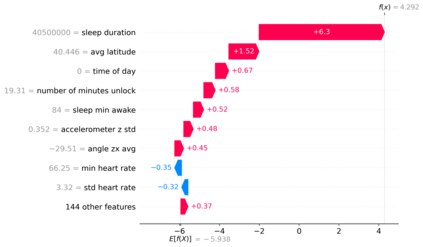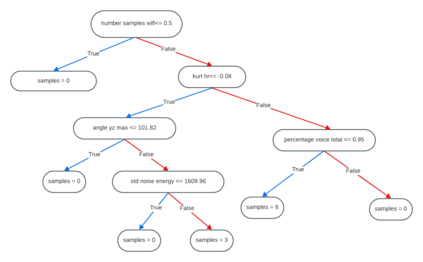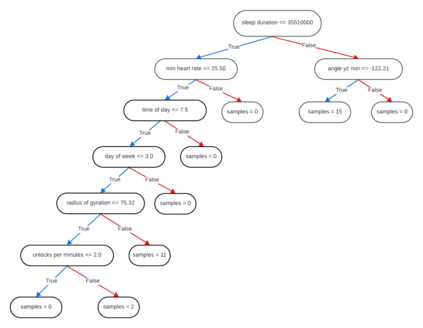This study explores the possibility of facilitating algorithmic decision-making by combining interpretable artificial intelligence (XAI) techniques with sensor data, with the aim of providing researchers and clinicians with personalized analyses of cannabis intoxication behavior. SHAP analyzes the importance and quantifies the impact of specific factors such as environmental noise or heart rate, enabling clinicians to pinpoint influential behaviors and environmental conditions. SkopeRules simplify the understanding of cannabis use for a specific activity or environmental use. Decision trees provide a clear visualization of how factors interact to influence cannabis consumption. Counterfactual models help identify key changes in behaviors or conditions that may alter cannabis use outcomes, to guide effective individualized intervention strategies. This multidimensional analytical approach not only unveils changes in behavioral and physiological states after cannabis use, such as frequent fluctuations in activity states, nontraditional sleep patterns, and specific use habits at different times and places, but also highlights the significance of individual differences in responses to cannabis use. These insights carry profound implications for clinicians seeking to gain a deeper understanding of the diverse needs of their patients and for tailoring precisely targeted intervention strategies. Furthermore, our findings highlight the pivotal role that XAI technologies could play in enhancing the transparency and interpretability of Clinical Decision Support Systems (CDSS), with a particular focus on substance misuse treatment. This research significantly contributes to ongoing initiatives aimed at advancing clinical practices that aim to prevent and reduce cannabis-related harms to health, positioning XAI as a supportive tool for clinicians and researchers alike.
翻译:暂无翻译










